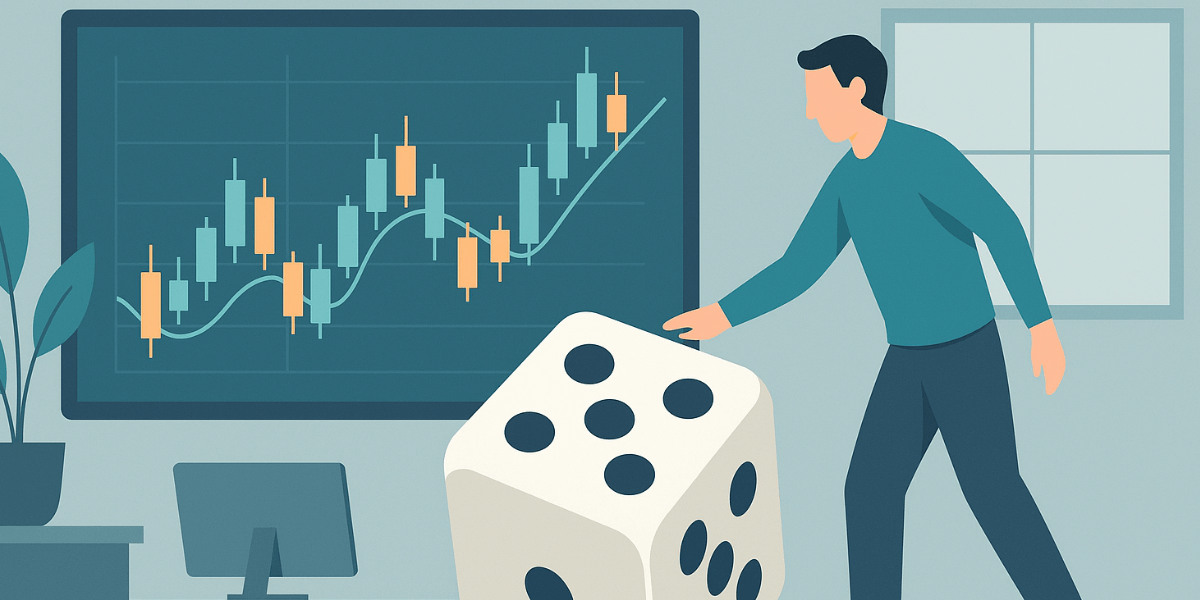At first glance, the world of sports and the world of Forex trading could not seem more different. One unfolds under stadium lights, cheered on by millions; the other takes place in quiet rooms, behind glowing screens and market charts. Yet, beneath the surface, these two disciplines share an astonishingly deep connection. Both demand mental resilience, precision under pressure, and the ability to recover from failure without losing confidence. Both reward preparation, patience, and control — not just of skill, but of emotion. And in both, victory belongs to those who master their psychology before they master their craft.
Sports psychology, which examines how mental and emotional factors impact athletic performance, provides valuable insights for Forex traders. While athletes train their minds to withstand the psychological strain of competition, traders face an equally demanding battlefield — a constantly changing market that challenges discipline, patience, and nerve. Understanding this psychological overlap can help traders develop stronger mental frameworks for success, transforming trading from a chaotic pursuit into a structured performance activity.
Most traders approach Forex as a technical endeavor — studying charts, analyzing patterns, optimizing entries and exits. Few, however, treat trading as a performance sport. The reality is that trading requires sustained concentration, emotional control, and resilience comparable to what professional athletes face in competition. Each decision in trading, much like each play in sports, unfolds under pressure and uncertainty. The key differentiator is psychological stability: the capacity to act with discipline when emotions are running high.
Just as elite athletes train their bodies and minds to perform at peak levels, traders must build habits and routines that protect focus and foster emotional balance. A trader who cannot manage fear or overconfidence is like an athlete who loses form under pressure — technically skilled but psychologically fragile. Sports psychology bridges that gap by teaching performance consistency, stress management, and mental recovery — all of which translate perfectly to the trading world.
Mental Toughness: Competing With Yourself
In sports, mental toughness is the ability to maintain confidence, focus, and determination even when conditions are adverse. It’s what keeps a tennis player composed after losing a set or a boxer calm after taking a hit. In trading, mental toughness manifests as the ability to stick to a strategy after a loss, avoid revenge trading, and continue executing the plan without emotional interference.
Trading psychology research consistently shows that emotions, not information, cause the majority of mistakes. Fear causes traders to exit too early; greed causes them to stay too long. Mental toughness means replacing emotion-driven reactions with rule-based execution. Just like athletes rely on training to guide muscle memory, traders should rely on predefined trading systems to guide decision-making. When fear, doubt, or euphoria arise, mental toughness keeps the process intact.
Focus and Flow: Staying in the Zone
Athletes often describe being “in the zone” — a mental state where concentration is absolute, and performance feels effortless. In sports psychology, this is called the flow state. In trading, achieving flow means being fully immersed in the market without distraction, where every action is deliberate and measured. However, reaching that state requires structure and preparation.
Traders must create conditions for the flow the same way athletes do. This includes eliminating distractions, setting specific goals for the session, and adhering to a consistent warm-up routine. Pre-market preparation — reviewing charts, noting economic events, setting alerts — acts like an athlete’s warm-up stretch. It primes the mind for performance. During trading hours, mindfulness helps sustain focus, while journaling afterward helps consolidate learning. Flow is not random; it is cultivated through discipline.
Goal Setting: Building a Framework for Growth
In sports, goals are divided into three categories: outcome goals (winning), performance goals (achieving personal records), and process goals (executing training routines). Traders can use the same model to refine focus. Outcome goals might include increasing profitability; performance goals could relate to improving trade accuracy or reducing emotional interference; process goals involve following pre-trade checklists, reviewing trades, and maintaining discipline.
Sports psychologists emphasize that focusing solely on outcomes creates anxiety and inconsistency. Instead, success emerges when attention shifts to the process — the only element within the athlete’s control. For traders, this means obsessing less over profits and more over execution quality. Consistency of process creates consistency of result. Every successful athlete understands this, and every professional trader eventually learns it the hard way.
Visualization and Mental Rehearsal
Visualization is one of the most powerful tools in sports psychology. Athletes use it to rehearse movements, strategies, and outcomes before they occur. The brain doesn’t fully distinguish between physical action and vivid imagination — mental rehearsal activates the same neural pathways as actual performance. Traders can use visualization to prepare for execution in much the same way.
Before the trading day begins, a trader can mentally rehearse the ideal session: calmly analyzing setups, entering trades with precision, managing risk without hesitation, and journaling results objectively. Visualization also helps prepare for stress events — losing streaks, missed opportunities, or sudden volatility. Mentally rehearsing calm responses builds emotional muscle memory, making it easier to stay composed when real losses occur. Over time, visualization conditions the trader to act like a professional athlete: prepared, intentional, and focused.
Dealing With Pressure and Expectations
High performers in every field face pressure — to win, to perform, to meet expectations. For athletes, it might come from spectators, coaches, or contracts. For traders, the pressure often comes from themselves: the need to hit monthly targets, recover from drawdowns, or prove competence. The physiological response to pressure — increased heart rate, muscle tension, and narrowing focus — is identical in both arenas.
Sports psychologists teach athletes to reframe pressure as a sign of readiness rather than threat. Pressure means the event matters — and that’s a privilege. The same applies to trading: rather than interpreting anxiety as weakness, traders can view it as energy signaling engagement. The body is primed for action. Proper breathing techniques, routine, and process orientation transform that energy into focus. What matters most is perception. The market, like the field, rewards those who treat pressure as part of the game, not as an obstacle to it.
Resilience: Bouncing Back After Losses
Every athlete loses. Every trader takes losses. What separates professionals from amateurs is recovery speed. Resilience is not denial of pain — it is the ability to learn from it without emotional paralysis. Sports psychology defines resilience as the ability to adapt positively in the face of adversity. In trading terms, that means reviewing losing trades objectively, extracting lessons, and re-entering the market with a clear head.
Traders build resilience through preparation and routine. Reviewing trade journals, identifying performance patterns, and tracking emotional triggers create a feedback loop that turns mistakes into insight. Physically, exercise and rest also play roles; mental fatigue and poor health amplify emotional instability. Just as athletes use recovery periods to rebuild strength, traders must schedule downtime to recharge. No one performs well indefinitely. Rest is not a luxury — it is part of the professional process.
Confidence: The Quiet Power of Self-Efficacy
Confidence in sports is not about arrogance — it’s about trust in preparation. A confident athlete doesn’t believe they will never miss; they believe they are equipped to handle misses when they come. In trading, confidence works the same way. It’s not the belief that every trade will be profitable, but that you can manage losses responsibly and execute consistently under pressure.
Sports psychology identifies two confidence sources: experience and self-talk. Experience builds trust through repetition. Self-talk — the internal dialogue you maintain — shapes perception. Negative self-talk (“I can’t afford another loss”) narrows focus and increases tension, while constructive self-talk (“I’ll follow my plan regardless of outcome”) sustains calm performance. Confidence in trading grows when experience and mindset align — when you have seen enough data to trust your edge and enough discipline to stay the course.
Routine and Consistency
One of the cornerstones of athletic excellence is routine. From pre-game rituals to post-game analysis, athletes rely on structure to stabilize performance. Traders benefit from the same consistency. A well-defined routine transforms randomness into rhythm: same start time, same market review, same execution checklist, same post-trade analysis. This repetitive framework minimizes decision fatigue and builds reliability — a key to mastering long-term performance.
Moreover, routines create psychological boundaries. They mark the beginning and end of performance, preventing emotional spillover. Without routine, trading sessions blur together, leading to fatigue and burnout. Just as athletes cool down after competition, traders need post-market decompression — stepping away, reviewing, and disconnecting. Consistency in ritual creates consistency in outcome.
Teamwork, Coaching, and Accountability
Even individual sports rely on teams. Tennis players have coaches, psychologists, nutritionists, and trainers. Traders, however, often isolate themselves. They work alone, self-taught, and self-judging. Sports psychology teaches that feedback accelerates growth. Having a trading mentor, accountability group, or performance coach provides a perspective that self-review cannot. External voices help traders identify blind spots, challenge biases, and reinforce discipline.
Furthermore, verbalizing decisions creates clarity. When you explain your trade logic to someone else, flaws become visible. This mirrors the athlete reviewing footage with a coach. In both cases, objectivity replaces self-delusion. A strong support system — even if it’s just a peer who reviews your journal weekly — can transform isolated learning into collaborative improvement.
Table: Comparing Sports Psychology Concepts and Forex Applications
| Sports Psychology Concept | Forex Trading Application |
|---|---|
| Mental Toughness | Maintaining discipline and confidence during volatile markets. |
| Focus and Flow | Staying present during trading sessions without distraction. |
| Goal Setting | Tracking process-based performance instead of monetary results. |
| Visualization | Mentally rehearsing trades before market open to enhance readiness. |
| Resilience | Recovering quickly from drawdowns and learning from mistakes. |
| Coaching | Using feedback and accountability to improve discipline and performance. |
Conclusion
The connection between sports psychology and Forex trading runs deeper than metaphor. Both worlds operate on uncertainty, pressure, and performance. The variables differ — one deals with physical movement, the other with financial motion — but the mental demands are nearly identical. Success depends less on strategy than on the mind executing it. Sports psychology teaches that consistency, not intensity, produces excellence. For traders, that means small, repeatable habits — not heroic bursts of brilliance — build lasting success.
The trader, like the athlete, must become a student of their own mind. Self-awareness replaces impulse, preparation replaces panic, and recovery replaces burnout. Each trading session becomes a performance opportunity — a test of focus, discipline, and resilience. When traders learn to treat their craft as a sport rather than speculation, every element of psychology becomes a tool: visualization for preparation, breathing for composure, journaling for improvement, and routine for rhythm. In time, trading becomes less about the market and more about mastering oneself.
Ultimately, the path to trading mastery mirrors the path of athletic greatness. It is not achieved through shortcuts or secret systems but through disciplined repetition, emotional control, and an unrelenting focus on process. The best athletes know that talent starts the journey but mental strength finishes it. The same truth applies in Forex: those who train their minds as rigorously as their strategies are the ones who endure, adapt, and win the long game.
Frequently Asked Questions
How can sports psychology improve my trading?
By teaching focus, discipline, and resilience. Techniques such as visualization, structured routines, and process-based goals enhance decision-making and reduce emotional trading.
What is the trading equivalent of mental toughness?
Maintaining composure during drawdowns and sticking to your plan despite fear or euphoria. It means executing consistently even when results fluctuate.
Can visualization really help in trading?
Yes. Visualization trains the mind to perform calmly under stress, reinforcing confidence and reducing hesitation during live market execution.
Why are routines important for traders?
Routines establish stability in uncertain environments. Pre-market and post-market habits create structure, minimize fatigue, and build consistency.
Do traders benefit from coaches like athletes do?
Absolutely. Mentorship and accountability accelerate progress, provide objectivity, and help identify psychological blind spots that self-review often misses.
What’s the biggest lesson traders can learn from athletes?
Focus on the process, not the outcome. Mastery is built through discipline, consistency, and recovery — not through chasing perfection or profit.
Note: Any opinions expressed in this article are not to be considered investment advice and are solely those of the authors. Singapore Forex Club is not responsible for any financial decisions based on this article's contents. Readers may use this data for information and educational purposes only.







